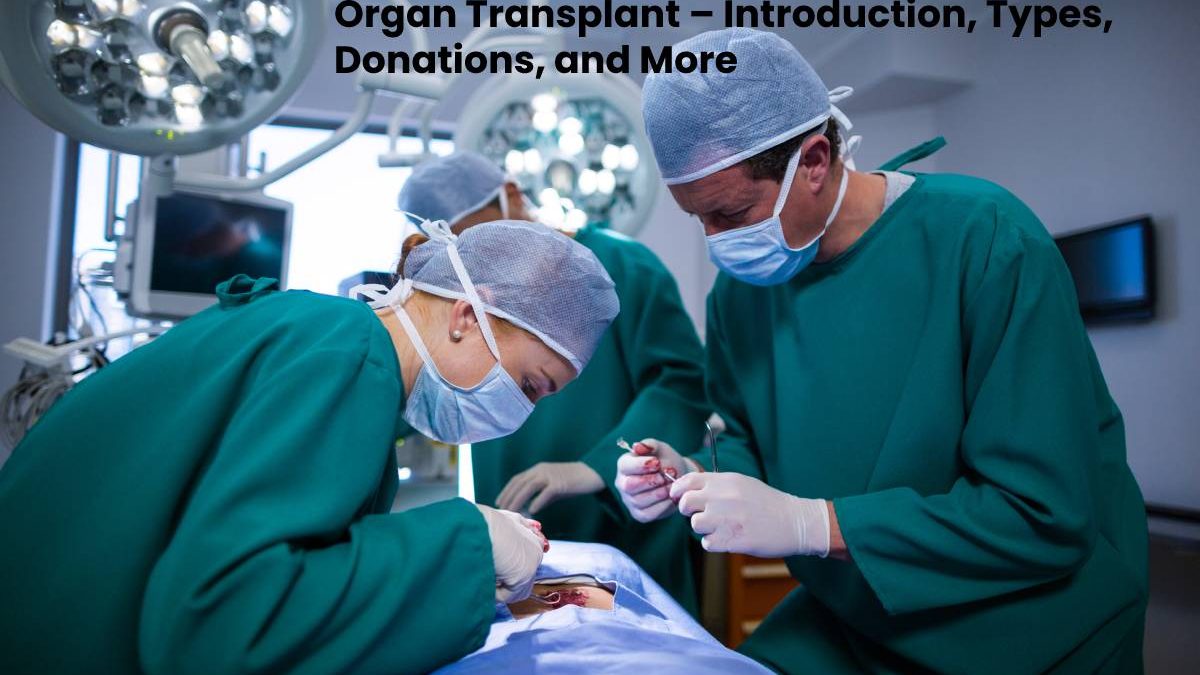Table of Contents
What is Organ Transplant?
An organ transplant is to replace a diseased organ or tissue with another that functions correctly. Today it is a highly progressive medical technique that achieves magnificent results for recipients. However, it necessarily requires the existence of donors.
What Types of Organ Transplant are There?
We can differentiate several types of transplants depending on the type of donor
- On the one hand, in the donation of a corpse :
Donors deceased due to brain deaths resulting from traffic accidents, work accidents, or end in the ICU.
Donors who died due to cerebrovascular accidents (stroke, etc.) - On the other hand, there are also several types of living donations.
Related donation is given between consanguineous relatives or similar figures (spouse, brothers-in-law, etc.).
Unrelated Donation:
Unrelated donation between people in the social and work environment of the sick person. Crossed donation occurs when there is no compatibility between a couple of a donor and a recipient. There is no compatibility between another couple of donors and recipients; however, the donor of one couple is compatible with the recipient of another and vice versa.
Chain donation is the previous situation but with more than two couples. Donation is made simultaneously to avoid the resignation of one of them if they have receives the transplant before. It is also usually promote by the appearance of a generous donor who facilitates the compatibility of more patients.
Altruistic Donation:
It is also known as the ‘good Samaritan.’ It is that donation of maximum generosity that an organ offers, without knowing the recipient, to the person with whom it is most compatible.
There is also a formula for transplantation in kidney disease, which is early transplantation: it occurs in an advanced stage of the disease but just before starting dialysis. It usually performs with living donors, although there is also room for cadaveric donors.
Which are the Most Frequent?

The most typical donation is the kidney, followed by hepatic (liver) and cardiac (heart); lung, intestine, pancreas, or double transplants are also perform. In the case of renal (kidney) transplantation, both kidneys can be donated when it is a cadaveric donor and one if it is a living donor.
Living donation is in the research phase, but it is an undeveloped technique. In cadaveric liver transplantation, the entire liver is donated in the case of a living donor, a part transplant since the liver can regenerate itself in a short time, donor and the recipient. In the lung, both transplants in the case of cadaveric donation.
How is an Organ Transplant Performs?
It is a process with two parts: the doctor and the patient.
The Medical Part
It is the least visible to society. Since the transplant alarm went off due to the appearance of a potential donor, many professionals have started: the doctors and nurses of the ICU of the hospitals; the hospital transplant coordinator, who activates the transplant protocol in the hospital; the regional transplant coordinator, so that it centralizes the potential donor’s data in its database and searches for the most compatible person in the province or community where the donor is. The ONT supervises the entire procedure to guarantee equity and equal access to the transplant and compliance with the criteria of altruism (without compensation of any kind), voluntariness (decision without pressure),
The Patient Part
The potential recipient goes to the transplant center to undergo compatibility and health status tests to receive the organ and thus confirm that they are the most compatible person of all the possible recipients. The organs have a maximum ischemia time, so the times also mark the immediacy of the transplants. If all tests are positive, the next step is surgery.
The procedure is slightly different in the case of living donation since the donor is subject to a general assessment that certifies their physical and mental suitability for the transplant. Thus, he must pass medical examinations, a psychological test, and a judicial phase in a complete process that can last between one and two months. Meanwhile, the receiver also undergoes some routine tests that confirm the physical and mental conditions to be a receiver.
When is an Organ Transplant Necessary?
When a significant disorder occurs, that affects the performance of a vital organ. As a consequence of illnesses or accidents, it is possible to lose the functional capacity of an organ. A transplant is necessary to replace the functions of the damaged organ.
Since each patient demands an organ or tissue with specific characteristics, there is no set time.
How are the Organ Transplant Distributed?
The criteria for distributing organs and tissues procured are different according to the particularities of the organ or tissue to be transplanted—distribution through SINTRA, which takes these criteria and issues a list identifying potential recipients.
To Whom are Tissues Allots?
Organs are assign based on pre-establish distribution criteria, but the person who accepts the organ or tissue is the doctor of the transplant center in charge. Once the professional agrees with the assign organ, he contacts the patient to start the necessary studies to assess whether she is in a position to be transplants.
How are Donor and Recipient Compatibility Determined?
Different values determine compatibility: blood group, histocompatibility system, and physical factors (weight, height, and body measurements).
Conclusion
Transplantation is a medical treatment that indicates when all other alternatives to recover health have been exhaust. It is the replacement of a diseased organ and tissue, with no possibility of recovery, for a healthy one that assumes the function of the recipient’s damaged organ, saving it or improving its quality of life.
Also Read: Biotin Deficiency – Introduction, Importance, Consequences, and More

